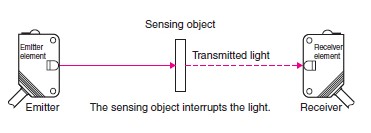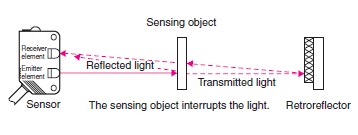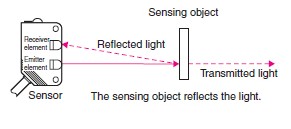Search in Category
Sensors, Photo
Search term required.
Search Filters
-
.47 lb x
Filter Your Search
 Brand
Brand
Shop by Category
Loading...
Photo Sensors
Viewing Page 1 of 1
(2 results)
QS18 Expert Series Clear Object Sensor;
Item #:
QS18EN6XLPC W/30
Supplier Part #: 97643
Brand:
Banner Engineering
QS18 Expert Series Clear Object Sensor, Range: 3000 mm, Input: 10-30 V dc, Output: NPN, 9 m (30 ft) Cable
$209.00
/EA
NOT CURRENTLY IN STOCK
QS18 Expert Series Clear Object Sensor;
Item #:
QS18EP6XLPC W/30
Supplier Part #: 97642
Brand:
Banner Engineering
QS18 Expert Series Clear Object Sensor, Range: 3000 mm, Input: 10-30 V dc, Output: PNP, 9 m (30 ft) Cable
$209.00
/EA
NOT CURRENTLY IN STOCK

Don't see what you need?
Click here to let us know and we'll help you find what you're looking for.Photo Sensors
As the manufacturing world becomes more integrated with automated technology, it is important to understand how this technology can help you. Industrial automation can make the lives of those working on the production floor easier and help increase a company’s productivity. One type of those helping workers is known as a photoelectric sensor, or photo sensor.What is a Photo Sensor?
A photo sensor is a device that detects a difference in the light level received from the light source. Consisting primarily of an emitter and a receiver, a photoelectric sensor emits light that when interrupted or reflected by the sensing object, it changes the amount of light that arrives at the receiver.Photoelectric sensors come in a variety of forms and can be used in many industries to accomplish a diverse list of tasks. ACD provides many varieties of these sensors, including diffuse-reflective, thru-beam, retro-reflective, and distance-settable sensors.
Types of Photoelectric Sensors
There are three major types of photo sensors: thru-beam, retro-reflective, and diffused. Each sensor is described below and has it’s own strengths and a variety of uses.Thru-Beam Photo Sensors
In thru-beam photoelectric sensing, also known as opposed mode, there are two separate devices that are used to make or break a beam. One sensor houses the light emitter while the other houses the receiver. A thru-beam sensor uses object detection by the light beam between the two sensors being interrupted by an object passing through.
Thru-Beam Applications
- Detect objects
- Very small objects
- Opaque objects
- Detect precise location of a specific object
- Detect spliced or overlapped materials
- Detect the contents of a container
- Detect fill levels inside a container
Retroreflective Photo Sensors
In retroreflective photoelectric sensing, both the emitter (or light source) and receiver are in the same housing. This type of sensor works alongside a reflector where when the light is emitted from the sensor and is aimed at the reflector, it is then sent back to the light receiving element. Retroreflective sensors detect the presence of an object when the light path is interrupted.
Retroreflective Applications
- Detect reflective tape at high speeds
- Detect objects moving at high speeds
- Detect large objects
- Sense transparent glass or plastic products
Diffused Photo Sensors
In diffused sensing, also known as optical proximity sensing, the light source and receiver are housed in the same device. Diffused sensors detect objects when the light beam that is emitted towards the target is reflected back to the sensor by the target. With all components in a single housing, this type of sensor is a great option for automation since they are more compact than typical units.
Diffused Applications
- Detect fill levels in a container
- Detect presence of parts, boxes, and other materials
- Detect multiple objects on a conveyor system
- Detect identifying features to determine an object’s orientation



